Part I –
INTRODUCTION
(Article by Marie Stravlo and Jonathan Iglesias)
This essay contains a detailed study of the interesting connection between two families, whose lineage and participation in the history of Russia, since its foundation, is extremely remarkable, although it has never been widely mentioned, at least in the West. For a better understanding of the reader, we have divided the story into two parts: from the origins of the Dolgorouky Dynasty to Prince Alexander Nikolaevich Dolgorouky. The second part presents mainly the life of Nicholas Alexandrovich Dolgorouky, son of Alexander and husband of Grand Duchess Maria Nikolaevna Romanov.
The Dolgorouky dynasty (also called Dolgoruky, Dolgoruki, Dolgorukov or Dolgorukii), seems to descend from the Rúrikovich, being a minor branch of the rulers of the Principality of Obolensk. There are few studies on this princely dynasty, and most of the publications are written in Russian.
Like many other houses of princes and nobles of Eastern Europe, they claim to descend from the Grand Prince Mikhail of Chernigov. It should be taken into account that the Dolgorouky dynasty (like many others such as Boryatinsky, Gorchakovy, Eletsky, Zvenigorodsky, Koltsovy-Mosalsky, Obolensky, Odoevsky and Shcherbatovy) began to take more importance in the nineteenth century, and all of them claim to descend from Mikhail.
According to some ancient records, Mikhail had only one son: Rotislav, but the genealogies gave him four children: Román, Simeón, Mstislav and Yuri, and from these descended mamy of the most important princely houses of Russia. The genealogy of these houses was created in the sixteenth century, although the great of its components can only be traced back to the fifteenth or fourteenth century. So, how come, if there is only evidence of these families until the fourteenth century, they can descend from a prince that lived in the twelfth century?
It is not so strange. Most of the royal houses in Europe and the largest noble houses claim to descend from illustrious or mythical figures: the Romanov were said to have come from Augustus Caesar, the Georgian Bragations from the Biblical King David, or the Lévi-Mirepoix from the cousins of the Virgin Mary. In Eastern Europe, a documentary absence was created due to the Mongolian invasions, which plunged the entire area into great chaos for about two centuries, and therefore, there was little or no knowledge of the Chernígov.
When all this happened and several families wanted to have importance in the new political order, a great number of lines were established as descendants from Mikhail, and some were full of erroneous and unknown names. For this, they used chronicles and synodiks[1]. In the synodicks appear an extensive amount of names of princes, although they do not indicate any relation between them, being therefore useless for the genealogical study. So, the experts in charge of creating these extensive genealogies took names of these lists and introduced them in these families, making impossible to prove the existence of the oldest ones since no information is possessed.
THE RÚRIKOVICH
The Rúrikovich dynasty reigned in the Rus of Kiev and in the principalities that arose from it. It even came to rule in the Russian Zarate until the establishment of the Romanov dynasty in the year 1613.
Like all ancient dynasties, their origins are mixed with legend and appeared for the first time in the so called Nestor Chronicle. According to this chronicle, the dynasty was established in Nóvgorod in the year 862 by Rúrik, a legendary governor who gave fame to this last name. Both he and his brothers founded what is known as the Rus of Kiev. Obviously, and as in most of these cases, the first rulers of the Rus are within the legend and there are chronicles that mix their names and deeds, or even place some before others.
THE RUSS OF KIEV
Several states, such as Russia, Ukraine and others, claim that their historical-cultural legacy comes from the Rus of Kiev, established from 882 to 1240. The Rus of Kiev was a federation of Slavic tribes, ruled by the Rúrikovich dynasty, that had its Center in Kiev, its capital. The sovereign received the title of “Great Prince of Kiev” and its power extended from the Baltic Sea to the proximities of the Black (the borders vary according to the time period). However, as a federation it was not a state or kingdom per se, but was composed by a series of principalities, each with a dynasty of sovereign princes, more or less autonomous, who were subordinate to the Great Prince and had to pay him a series of Tributes. Gradually, the power of the Rúrikovich began to spread throughout all the principalities of the Rus, and in practice all the dynasties that governed those principalities were the Rúrikovich.
Perhaps the two greatest princes of Kiev were Vladimir the Great and Yaroslav the Wise.
Prince Vladimir I (972-1015): he is known in Russian and Ukrainian historiography as “the Christianizer”, since it was he who introduced Christianity into the Rus, abandoning Slavic paganism. Due to his marriage to Princess Anna, sister of the Emperor Basil II of Byzantium, in the Eastern Liturgy was adopted the Rus of Kiev under the Eastern Orthodox Church. Likewise, embracing Eastern Christianity meant that Latin was not obliged, as it was in Western Europe due to the Roman liturgy, and that Slav literature was promoted in Cyrillic. Likewise, this union with the emperor’s sister caused the Byzantine Empire and Rus of Kiev to establish economic and commercial ties.
Yaroslav the Wise (978-1054): was one of the many children of Vladimir I, and Prince of Kiev on three occasions, besides being also Prince of Novgorod. During his tenure, the Rus of Kiev reached its maximum influence and extent. Something remarkable in him was the strengthening of his foreign relations with Europe through the marriage of several of his sons with foreign kings. Some of them were exiles who lived in his palace: Isabella married Harald III of Norway, Agmunda with Andrés I of Hungary, Ana with Henry I of France or Dobroniega with Casimir I of Poland. But he did not stay there, because his granddaughter Eupraxia married Henry IV, emperor of the Holy Roman Empire. One of the works that he carried out to settle the Christianity was the construction of the Cathedral of Saint Sophia of Kiev or the one of Saint Sophia of Novgorod.
After the death of Great Prince Yaroslav, the Rus of Kiev began to fall in a strong decay that lasted throughout the twelfth century, disintegrating into several regional powers that confronted each other. The decadence of Constantinople was also an influence, and the Byzantine Empire, which was commercially and economically linked to the Rus. However, the total disappearance of the Rus of Kiev came in 1240, with the invasion of the Mongol Empire.
PRINCIPALITY OF CHERNIGOV (and other principalities, including the Dolgorouky)
Between 1024 and 1036, Grand Prince Vladimir I installed his son, Mstislav, who became the first Prince of Chernígov in this principality, to gain greater control of the area. The Rúrikovich dynasty did not settle in Chernígov until Yaroslav I placed his son Sviatoslav in the principality, appearing thus the branch of the Rurikovich of Chernígov, from which a great amount of princely houses affirm to descend, including the Dolgorouky.
As mentioned above, the key character from whom descend all those houses was Mikhail of Chernigov (1185-1246), who ruled over several principalities (twenty-fifth Prince of Chernigov) and was also named the Grand Prince of Kiev. The news about this prince are also confusing, for example, it is not clear with whom he married or if he had more than one wife. Some chronicles claim that he married Elena Romanova, daughter of the Prince of Hálych.
During his mandate he had to confront the Mongol invasion and join forces with all the princes of the Rus of Kiev to battle the enemy, but he failed. A part of the historiography has punished him for it, considering him a leader not prepared and who did not know how to join forces and face an external invasion. In one form or another, all the other princes were falling or surrendering to the fear of the Mongols, led by Genghis Khan’s troops. Only Mikhail refused to do so, and although at the end of his life he had to bow to Batu Khan, one of the Mongol governors, Mikhail refused to abjure his Christian faith, being killed and becoming the first Slavic martyr.
THE DOLGOROUKY
The Dolgorouky princes claim to descent from one of the alleged sons that the genealogists grant to Mikhail: Yuri, one of the sons that he probably had with Maria of Galizia. Yuri received the title Prince of Torusa and Briansk (in some writings Prince of Taroussa and Obolensky). But it was the son of his great-great-grandson, Ivan Andrevich Obolensky (Ivan II, Prince of Torusa and Briansk), the founder of Dolgorouky dynasty in the 15th century, because, beginning with him, his descendants were known as the Dolgorouky (Долгорукий, in Russian), meaning “long arm”.
At the time when the Dolgorouky dynasty appeared, the Rúrikovich family was not having their best moments. The Rus of Kiev was totally gone, and the Mongols, through the Golden Horde, controlled a vast territory and had all the Slavic princes under their control. The only Christian state in Eastern Europe strong enough to stop the Mongols was the Principality of Moscow, who at first collaborated with them and its princes won the respect of the Mongol leaders.
In 1380, Dimitri I of Moscow (1359-1389) began to confront the Mongol leaders and several territories were annexed to Moscow. At the end of the 15th century, specifically in the year 1494, Obolensk, where the Dolgorouky ruled, was incorporated into the Grand Duchy of Moscow, which was under the reign of Ivan III. From this moment, the Dolgorouky House became an influential family in the Russian Zarate, which was established in 1547, under the reign of Ivan IV, the first of the tsars.
The Rúrikovich dynasty would last longer in Russia, specifically until 1610, the year when the last tsar Rurikovich, Basil IV, was assassinated, and three years later, in 1613, Michael I, the first Romanov tsar, was crowned.
Descendants of the Dolgorouky of Wolodomir
Almost all of the current Dolgoroukys descend from Wolodomir (or Vladimir) Ivanovich Dolgorouky (15th century), who was one of the sons of the founder of the Dolgorouky dynasty (Ivan Andrevich Obolensky). Nevertheless, the familiar branches of two of his children: Timofei and Simeón, were more prolific.
There have been Dolgorouky who have been very close to the realms of Russian power, in both the Court of the Rúrikovich and in that of the Romanovs. Because it was a very prolific dynasty, they quickly spread throughout the Russian Empire and many Dolgoruky appeared, some more influential than others. Here is a list of the most important:
Ivan Andreevich Shiban (? -1590): grandson of Siméon Dolgorouky. In 1556 he was the right hand of Prince Kaybula during the invasion of Crimea, and a few years later, from 1578 to 1584, he was Commander-in-Chief of the armies of Chernígov.
Grigoriy Ivanovich Menshoy: grandson of Timofei. He was governor of several zones in different years (Shatsk, Kaluga, Novgorod or Tyumen).
Maria Dolgoroukaya: wife of Tsar Ivan IV.
Maria Vladimirovna Dolgoroukova (died in 1625): first wife of Tsar Michael I, although she died four months after the wedding.
Danilo Ivanovich Dolgorouky (died in 1626): courtier and commander of the city of Kaluga in 1618. Protected it during the siege of Vladislav.
Fedor Fedorovich Dolgorouky (? -1664): was Governor of Pskov for two years (1651-1652), being Governor of Vitebsk ten years later. In the campaign of Poland of 1654, he was at the head of the military nobility.
Dimitri Alexeevich Dolgorouky (? -1673): was commander in Polotsk and participated in several battles. Together with his brother George he was appointed ambassador in Smolensk to sign the peace. A few years later, by 1671, he was granted the position of Governor of Suzdal and had to negotiate peace with Poland.
Vladimir Dmitrievich Dolgorouky (? -1701): He was a fairly influential courtier and reached the rank of Governor of Pskov and commander in the Battle of Kazan. But it was not the only battle he fought, since he also battled campaigns in the Crimea. One of his hobbies was the construction of boats and the breeding of Russian horses, arriving to be considered one of the best horse experts of Eastern Europe.
Gregory Fedorovich Dolgorouky (1657-1723): he was aid to Tsar Peter I and participated in the Council that suppressed the localisms. In 1695 he was captain of the regiment during the campaigns in Azoz. Three years later, in 1698, he was Governor of Rostov.
In 1700 he was sent to Poland with a secret message for King Augustus II to attack Sweden during the Northern War. It was signed, thanks to his intervention, an alliance with Poland. Thanks to his diplomacy in this kingdom, he was appointed official Ambassador in Poland. In addition to being a diplomat, he was a skilled warrior and thanks to his intervention in the Battle of Poltava he was awarded the rank of Private Counselor and member of the Order of the Apostole Saint Andreya Pervozvannogo. At the end of his life he was a Senator in Warsaw at the request of the same Polish King. He had two marriages, the first with Ivana Andreevicha Golitsyna and the second with Xenia Ivanovny Morozova.
Alexei Gregorovich Dolgorouky (? -1734): son of the previous one. Because his father spent much of his life in Warsaw, he was born there and later sent to study in the Italian Peninsula. At the end of his studies he received help from his uncle Yakov Fedorovich and in 1713 was appointed Governor of Smolensk. His career advanced quickly, because in 1726, he was elevated to Senator by order of the Tsarina Catherine I. Thanks to his culture he was appointed second tutor to Grand Duke Peter.
When Peter II ascended the throne, after Catherine I died, he began to receive many prizes and was appointed member of a secret Council. He was accused on multiple occasions of attempting to manipulate the Tsar and distract him from his political duties. The Tsar got very ill and died the same day he was supposed to marry Ekaterina Dolgorukova. At the death of the Tsar, he was exiled.
Vasily Lukich Dolgorouky (1672-1739): diplomat and Russian Minister. He studied in France, thanks to his uncle Yakov Fedorovich, learning several languages. In 1706, he was appointed ambassador of the Tsar in Poland. In 1720 was Ambassador in Denmark and a year later in France. He was a great politician who achieved a greater union of those countries with the Russian Empire, mostly because he was a great instigator in the courts where he resided. Finally, he was appointed Plenipotentiary Minister in Warsaw.
Vasily Vladimirovich Dolgorouky (1667-1746): Russian Field Marshal. He participated in several battles with Tsar Peter I, the Great. Although he was close to the Emperor, he preferred the Tsarevitch Alexei. Because of that he was exiled and could not return until 1724, when the Tsarina Catherine the Great was crowned. He spent the last days of his life as commander of the Russian Forces in the Caucasus.
Alexei Alekseevich Dolgorouky (1767-1834): grandson of the previous one. He was Senator and member of the Council of State. In addition, he also had a good military career, being promoted to Colonel before becoming State Advisor. In 1808 he was appointed Governor of Moscow and supervisor of the area of Siberia. In 1827 he was Deputy Minister of Justice and in 1828 Minister of Justice, eventually editing and publishing 15 volumes of imperial laws. He married twice: one with Margarita (or Maria) Ivanovna Apayschikova and his second marriage with Varvara Nikolaevna Tekuteva. One of his sons was Nicholas Alekseevich Dolgorouky.
Helene Pavlovna Dolgoroukov (1790-1860): grandmother of Sergei Witte, who would be Minister of Finance with Alexander III and Prime Minister in the time of Nicholas II.
Vasily Andreyevich Dolgorouky (1804-1868): had the support of Nicholas I and in 1848 was appointed Deputy Minister of War at a critical time. Later he was promoted to Minister and in 1856 Head of the Russian Police.
Nicholas Alekseevich Dolgorouky (1819-1887), one of the Court’s treasurers. He married Princess Olga Aleksandrovna Lvova (1838-1921). He had several children, among them Prince Alexander Nikolaevich Dolgorouky, to whom we will dedicate several lines ahead.
Helena Blavatsky Dolgoroukova (1831-1891): occultist, medium, author who co-founded the Theosophical Society.
Ekaterina Mikhailovna Dolgorukova (1847-1922): was the morganatic wife of Tsar Alexander II. They had four children. After the Tsar died, she was given a pension and ended her life in Nice, France.
Vasily Alexandrovich Dolgoruky (1868-1918): Marshall of the Court of Nicholas II. He voluntarily accompanied the Imperial Family during his captivity in Tsarkoe Selo and in Tobolsk, although he was not allowed to be transferred to Yekaterinburg. Finally he died in Bolshevik hands.
Alexander Nikolaevich Dolgorouky
Alexander Nikolaevich Dolgorouky was the son of Prince Nicholas Alekseevich Dolgorouky (1819-1887), one of the Court’s treasurers, and Princess Olga Alexandrovna Lvova (1838-1921), Prince Lvov’s cousin, who was the first president of the Provisional Government, after the overthrow of Tsarism.
Prince Alexander was born on December 27, 1872, in St. Petersburg. In 1893, at the age of twenty-one, he entered the prestigious Page Corps, a military academy at the capital of the empire. Three years later he enrolled in an Oriental language course offered by the Asian Department of the Ministry of Foreign Affairs. He became very fluent in Turkish, Persian and Arabic. His love for languages made him hold a postgraduate degree in Oriental Languages in 1896 and was sent to the Embassy of the Russian Empire in Constantinople for one year.
By that time he married Sophia Mikhailovna Ustinov, daughter of a general. They had two children. The first, Nicholas Alexandrovich Dolgorouky, was born in 1898 in St. Petersburg and the second was a daughter, Maria Alexandrovna Dolgoroukova, who was born in 1901, in Yalta (Crimea).
Continuing with his military studies, he entered the Army Academy in 1903. By his own request, he was sent in 1904 to fight in the Russo-Japanese War, in which he was seriously wounded, receiving a strong blow to the chest and in his face. For his bravery during the war, he received five awards and the Order of Santa Ana[2].
After the war he continued ascending of rank in the army, moving from Captain to Colonel. Soon he became General of Division and finally was appointed Lieutenant General. At the end of August of 1917 he was arrested for participating in the coup attempt of Kornílov[3], and sent to the Fortress of Peter and Paul, although he was freed a few days later. Fearing that he would be arrested again for his monarchical ties, he decided to move to Kiev, near his friend Fedor Bezack, one of the most important monarchist leaders of the time, and a former member of the Duma representing the province of Kiev.
His presence was important in the People’s Republic of Ukraine, created after the Russian Revolution, on March 17, 1917. This Ukrainian republic had three historical stages until its dissolution in 1921: The Central Rada, the Hetmanate and the Directory.
The Central Rada had a strong socialist tendency, but was not able to maintain the order due to the strong opposition that existed from many entrepreneurs, landowners and farmers that formed the economic upper class of the zone. The Rada collapsed when the Central Powers, particularly Germany and Austria, withdrew their support. At that time the wealthy farmers organized a coup led by Pavló Skoropadski, an aristocrat landowner who was also a military and state leader, decorated by the Imperial Russian Army and Ukrainian Army general of Cossack heritage. Skoropadsky became a conservative leader in Ukraine following the Russian Revolution of 1917, and was the founder of a hetman dynasty and Hetman of Ukraine. He created a conservative government, with the approval of Germany (thanks to the Treaty of Brest-Litovsk, the German Empire could keep part of its army in the area, which gave him great authority and made Ukraine into a kind of German protectorate). Thus began the Hetmanate and Skoropadski was recognized like Hetman (title that comes to signify governor) on June 2nd, 1918 by thirteen States.
During the Hetmanate, Alexander Dolgorouky was appointed General and Commander in Chief of the Ukrainian Army (what would be understood like Generalísimo of the Armies). But Ukraine at that time was like a satellite state of Germany, used to exploit it for the benefit of the Central Powers. Rapidly, in the chaotic system in which the area was due to the war, measures of censorship and prohibition of strikes were imposed, concentrating all the powers in the Hetman.
In a short time, the opposition of the nationalist left began to grow stronger in Ukraine, just as the Austro-Hungarian Empire began to dissolve and the Germans began to withdraw their troops from Ukraine. The Hetman attempted a recognition by some countries of the Ukrainian state, but failed, while the new Soviet Russia began to attack his government. The opposition began to form a Directory and Skoropadski’s attempts to stay in power were annulled.
On December 14th, 1918, in a private ceremony at the Mariinsky Palace (residence of Alexander Dolgorouky), Hetman Skoropadski ceded the powers to Prince Alexander Dolgorouky, perhaps for being a Dolgorouky and, therefore, descendant of the old dynasty Rúrikovich. Some saw in this assignment that Skoropadski was looking for a Turk’s head. Thus, an eventual “hereditary monarchy” was created, with Alexander at the head of it like Volodar (King).
But that enthronement was very ephemeral, for the National Committee of Ataman Simon Petliura, one of the leaders of the left, rose against the new regime and demanded to Alexander Dolgorouky the transfer of his powers. The Central Powers no longer supported the Ukrainian conservative regime and the abdication of Kaiser Wilhelm II, made the “Volodar” run out of support. Finally, he allowed the Board to take over the reins of the Ukrainian Government.
Immediately afterwards, seeing the danger that might lie ahead, Prince Alexander left with his wife to Germany. His son, Nicholas Alexandrovich, went to Romania with a mysterious young girl supposedly named Ceclava Czapska (Tchapzka), who had escaped from Russia and enjoyed the protection of General Alexander Dolgorouky in Ukraine. Before leaving to Romania the young couple was engaged in marriage.
While in Germany, Prince Alexander kept alive the desire to continue fighting to defend his homeland. Seeing that his family was safe, he left to Estonia, under the orders of General Rodzianko. There he was appointed Commander of the Infantry Division. He was in battle only one year, because in 1920, the army was dissolved and he returned with his family.
After this he did not want to continue his military career and in 1921 he moved to France[4], where he attended the First Congress of Monarchists in exile. There he met up with his son. Later, in 1924, he was able to enter the Societé Internationale Forestiere et Minière du Congo and moved to the Belgian Congo until 1929 when, thanks to his knowledge of the Arabic language, he got a job in the Office Chérifien des Phosphates (Office of Phosphates, Chérifen, currently called OPC Group), in Rabat, Morocco, which became his official residence until his death.
He never forgot his monarchist ideology and was throughout his life an ardent anti-communist. He even became head of the EMRO[5] delegation in Rabat. Finally, on January 17, 1948, at the age of seventy-five, he died in Rabat. His wife Sophia Ustinov survived him for three more years, dying in 1951. Both are buried in the Russian Section of the European Cemetery of Rabat.
The only daughter of the marriage, Maria Alexandrovna, after living in Romania and Germany moved to Brussels, where she studied and obtained a Bachelor’s Degree in Economics from the Free University of Brussels. She remained there almost all her life, until she moved to Paris shortly before her death in that city in 1992. She is buried in Sainte-Geneviève-des-Bois, the Russian Cemetery in that city.
Strangely, in some sources consulted, it appears that Prince Alexander Nikolaevich Dolgorouky was shot by the Bolsheviks and died in 1919, along with three hundred more hostages, shortly after giving power to the Directory of Ukraine. This information is completely false, as there are several registers -as has been presented in this article- that show his movements through Germany, Estonia, France, the former Belgian Congo and lastly in Morocco. On top of that, his grave in the European cemetery of Rabat is a verifiable fact.
Alexander Dolgorouky and the Romanovs
While Alexander Dolgorouky was exiled in France, he was contacted by Judge Nicholas Sokolov, who was investigating the disappearance of Nicholas II’s family. He knew that Prince Alexander had some information related to the last days of the Romanovs. The meeting of the Judge with General Dolgorouky, -who was 48 years old-, took place on February 5, 1921, and is one of the most intriguing testimonies we have found. Interestingly, this statement was not included in the final report that Judge Sokolov published in 1924, known as the “official version”[6] on the disappearance of the last Imperial Family of Russia. This important statement was actually found by BBC journalists Anthony Summers and Tom Mangold[7] at Harvard University while conducting their research for the production of a documentary in London in 1972. All the documents that Sokolov used to write his report were together, but they found a separate package containing a series of documents and interviews that clearly suggested that at least the Tsarina Alexandra and her children had been transferred to Perm on the night of July 16-17th, 1918, and that Tsar Nicholas II could have had a different fate. Summers and Mangold included an excerpt from that testimony in their book “The File on the Tsar“. We have decided to include the full statement, which reads as follows:
“I remember that on July 5 or 6, 1918, Bezak[7] called me to tell me that Alvensleben[8] wanted to meet with us to give us important news. Bezak, Alvensleben and I met. He told us that Kaiser Wilhelm II wanted at all costs to rescue the sovereign, Tsar Nicholas II, and that he had made arrangements for that purpose.
Alvensleben warned us that rumors of the Tsar’s death would occur between the 16th and 20th of July, but that they should not alarm us; like the rumor of the murder of the Tsar that was circulating in the month of June, it would be false, but that it was necessary for certain reasons, which were, for the rescue of the Tsar. I remember perfectly that our conversation, which, as I say, took place on July 5th or 6th, Count Alvensleben indicated that the false news of the Tsar’s murder would occur between July 16th and 20th. At the same time, he begged us to keep our conversation secret with him and give the impression that we believed the news of the Tsar’s death.
Between 16th and 20th, I read in local newspapers that the Tsar had been shot and that the family had been moved to safety. I was astonished at the accuracy of Alvensleben’s information, and of course I did not believe what the newspapers said. Immediately after reading the news bulletins, I walked on the way to the conference room and had a conversation with Bezak. We decided to celebrate a Requiem Mass in the cathedral, anyway; it seemed to me that many people, even perhaps most of them, did not believe that the news was true. Many asked me and Bezak questions. Our situation was very difficult. We did not deny the possibility that the Tsar had escaped. General Skoropadski did not attend the funeral at the cathedral, but celebrated one in his own house, in which Alvensleben was also present. It was said that Alvensleben had “wept” during Mass. Bezak and I said: How well he plays his role!
Curiously, Alvensleben said that the Germans did not know quite well where the Tsar was. He asked to send two Russian officers to find specific information on this. He said that the Army Headquarters would provide travel papers to the elected officials to go through the German-occupied area.
It seemed to me that there was something strange, something incomprehensible in what Alvensleben told us: Why would Russian officers had to be sent to look for the Tsar in hostile territory, if the Germans had their great secret service there and also their official representative in the person of Count Mirbach, and they could get accurate information on the whereabouts of the Tsar at any time”?
The strangeness shown by Prince Alexander Dolgorouky was certain, since the Germans possessed a large number of spies in the Urals and in Ekaterinburg; indeed, during the months of May and June, a contingent of Germans arrived at Ekaterinburg and were well received by the Bolsheviks in the area. They lived on a train, parked at the station, and claimed to be under a Red Cross mission to assist prisoners of war. Robert Wilton, the London Times correspondent, wrote: “A German mission arrived in Ekaterinburg at the end of June to inquire into the situation of the prisoners of the Ipatiev House.”
According to Prince Dolgorouky, six officers were selected, at the request of Alvensleben: four were sent to Moscow and Kotelnich respectively. A third party, formed by Captain Karangozof and Captain Karasov, left to Ekaterinburg and learned about the Tsar’s execution while passing through Moscow, but they did not obtain evidence. And here we finish this interesting episode that, until now, is related in all its extension.
DECORATIONS RECEIVED BY PRINCIPE ALEXANDER DOLGOROUKY
[1] Synodiks are lists of names that were used in the convents to pray for during the liturgies.
[2] http://www.grwar.ru/persons/persons.html?id=281
[3] An attempt of a Coup‘d’etat organized and performed by General Lavr Konílov of the Russian Army, which failed after just a few days.
[4] “The Truth of the Russian Revolution: The Memoirs of the Tsar’s Chief of Security and His Wife”. State University of New York Press; annotated edition edition (1 July 2017).
[5] The All Russian Military Union created in 1924 by Barón General Pyotr Wrangel It was a unión of former members of the White Army in exile. They created several military groups in different countries where there was a population of Russian emigrees, especially Russian monarchiests .
[6] “Enquête judiciaire sur l’assassinat de la famille impériale russe, avec les preuves, les interrogatoires et les dépositions des témoins et des accusés”.
[7] “The File on the Tsar”, Anthony Summers and Tom Mangold, London, 1976.
[7] Fiodor Bezak, member of the State Council of Ukraine. One of the most important monarchist leaders of the time, and a former member of the Duma representing the province of Kiev.
[8] Count Hans Bodo von Alvensleben, one of the most important diplomats in Berlin and Ukraine. He was very close of Kaiser Wilhelm II and his brother Prince Henry of Prussiaand acted as the link between the puppet gobernment of Ukraine and Berlin.

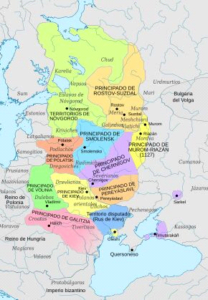
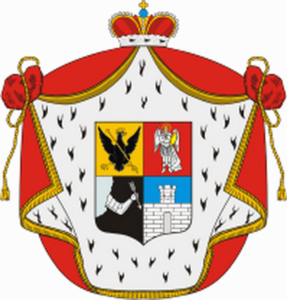
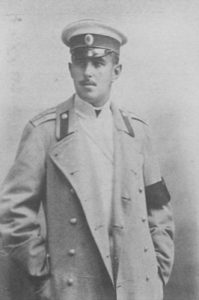
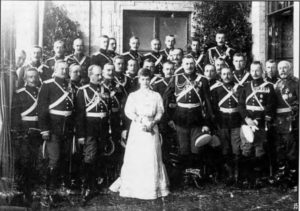
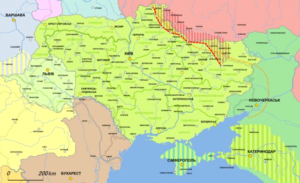
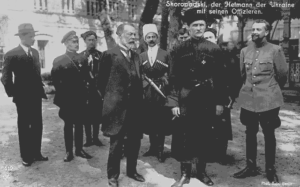
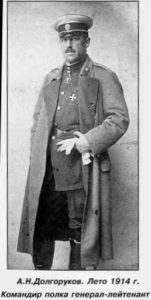
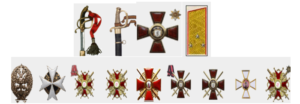
I found this article of great interest My knowledge of the Russian Imperial family helped me to follow with great interest all the findings on the “so called “Execusion of the Ipatief House.I knew that apart from H.I.M. Nicalas the II, all were saved. However with regards to The Tsarevich, great was my surprise that he too was saved…
I am really pleased to glance at this web site posts
which includes tons of helpful data, thanks for providing such statistics.